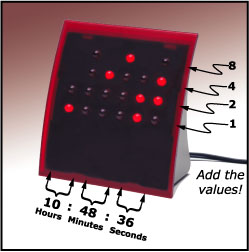CHIP-8 BCD
Recently I've been implementing a CHIP-8 emulator in Go, from just the spec here. While implementing, I learned a new concept from one of the instructions:
Fx33 - LD B, Vx
Store BCD representation of Vx in memory locations I, I+1, and I+2.
BCD here stands for Binary-coded Decimal, where a byte is used for each decimal digit in a number. In this case,
the 8 bit register Vx has it's hundreds place moved to I, tens to I+1 and ones to I+2.
Heres an example, if your value to encode is 238:
Vx | 11101110 | 0xEE | 238
----+----------+------+----
I | 00000010 | 0x02 | 2
I+1 | 00000011 | 0x03 | 3
I+2 | 00001000 | 0x08 | 8
Neat! But, I'm not sure what it's useful for in CHIP-8. The Wikipedia page has a list of advantages, but I'll have to poke around some CHIP-8 programs to see how it is used.
Deriving BCD digits
My implementation is the most straightforward I could think of. There is probably some bit twiddly way to do it, but I'm not great at those things. My method was to modulo out the upper digits, and divide what remains to get each digit independently.
m.memory[m.I] = m.V[x(op)] / 100
m.memory[m.I+1] = (m.V[x(op)] % 100) / 10
m.memory[m.I+2] = ((m.V[x(op)] % 100) % 10) / 1Clock
After seeing the visualization on the Wikipedia page for BCD, I realized I have a clock from ThinkGeek (remember ThinkGeek?!) that was a BCD representation of the time. I'm sure I still have it in a box somewhere, but it's at least 15+ years old at this point.
